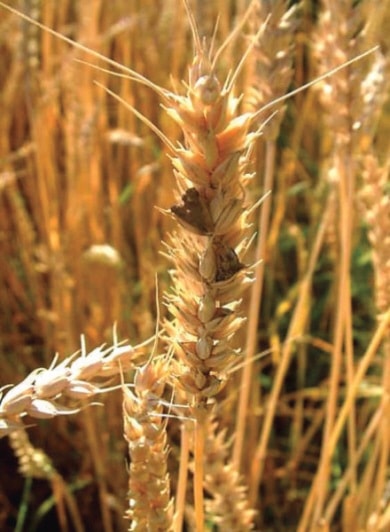Farmers having trouble keeping their livestock at a good weight or see problems with animals’ hooves may need to look at their feed and the potential of ergot fungi in it.
Ergot is a fungus that infects many cereals and grasses such as triticale, wheat, barley and rye and while harvest screenings separates the plant disease from human consumption, what’s left usually gets fed to livestock, explained Art Preachuk, agricultural manager with Red Deer County.
He says three animals died in Red Deer County last year that researchers confirmed were a result of ergot poisoning, and in the Stettler area 11 animals have died in recent years due to the same issue.
“If that makes it into the feed, it’s poisonous to animals,” Preachuk explained.
If the weather is cool and damp in the late spring and early summer, these are ideal times for the fungus to grow, explained Preachuk. The fungus can be identified by black bodies that replace the grains of the affected head.
The fungus causes animals’ blood to thin and Preachuk says farmers should inspect an animal’s hooves to see if they are rotting. To prevent the disease, Preachuk recommends farmers follow a regular drop rotation and destroy screenings from the edge of an area.
“It’s usually heavier on the outside of the field,” said Preachuk.
“Don’t put that ergot into your cattle feed, it’s not going to help you,” he added.
He feels education is the best way to understand the problem and recommends farmers and seed producers ensure there is as little ergot in the grains as possible.
“Farmers should be asking their feed operators what levels they use in the feed,” he advised.
He suggests this issue could get worse over time if not kept in check. “It’s one of those sleepers.”
Control strategies
Management and control strategies recommended by Alberta Agriculture and Rural Development suggest farmers reduce inoculum levels and apply copper fertilizer. Other recommendations are:
Test soils for copper availability; an application of copper fertilizer may be needed if levels are below 1 ppm in many soils.
Use a rotation with non-host crops to reduce inoculum levels. Ergots rarely survive more than a year in the soil.
Bury crop residue 2.5 cm or more into soil to prevent spore-producing "mushrooms" from emerging above ground.
Delay swathing, particularly in headland areas if possible, because windy weather will shake out the ergots from standing grain.
Mow headland grasses on a regular, annual basis well before seed set. This will prevent ergot production. Meadow foxtail is extremely susceptible to ergot.
Harvest headland area swaths separately because they are likely to have the highest ergot contamination.
Store ergoty grain intended for seed for two years. The ergots will die, but the grain will remain viable for many more years.
